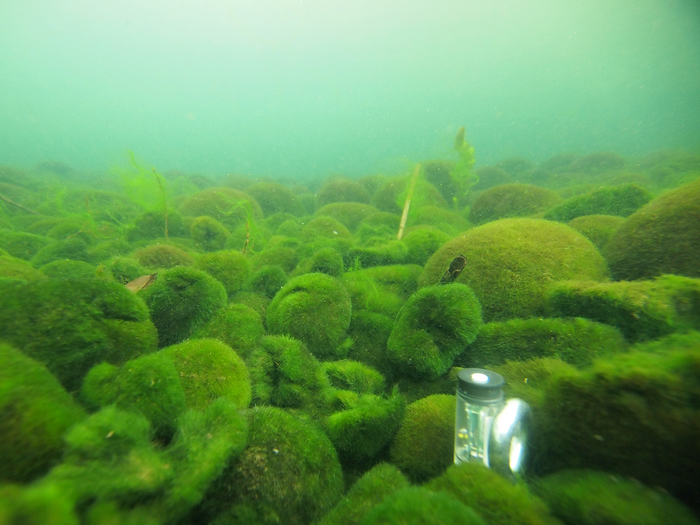Japanese seaweed balls at risk from deadly winter sunburn, study shows
Seaweed balls are treasured in Japan but could be at risk of extinction due to melting ice, Mustafa Qadri writes

Marimo - or seaweed balls - could be at risk of extinction due to global warming, a new study has found.
The living algae balls are sheltered from excessive winter sunlight by a thick layer of ice and snow, but due to global warming, the ice is thinning.
Marimo is an endangered species and globally their numbers are generally declining. This is usually attributed to human intervention altering or polluting the freshwater lakes in which the fluffy seaweed balls live.
Researchers found that Marimo could survive under bright light for up to four hours and would recover if then placed under moderate light for 30 minutes. However, when exposed to strong daylight for six hours or more, certain cells involved in photosynthesis were damaged and the algae died, even after being treated with moderate light.
The project assistant, professor Masaru Kono from Tokoyo University, said: “These results suggest that photoinhibition - the inability to photosynthesize due to cell damage - would be a serious threat to marimo in Lake Akan.”
He stated the lake receives more than 10 hours of sunlight a day in winter and if global warming continues rising, the ice covers will recede.
Professor Kono hopes this research will help both local and national governments to understand the urgent need to protect Japan’s unique marimo and its habitat.
“We also hope this will be an opportunity for all people to think seriously about the effects of global warming,” he said.

Marimo range in size from about a pea to a basketball, and form naturally when floating strands of the algae, ‘Aegagropila linnaei’ are bundled together through the gentle rolling motion of lake water.
They are recognised as a national treasure in Japan where they have been a protected species since 1920, and their home, Lake Akan, has been designated a national park.
An annual three-day festival is held in Hokkaido every October by the Ainu people to honour the marimo.
Join our commenting forum
Join thought-provoking conversations, follow other Independent readers and see their replies
Comments